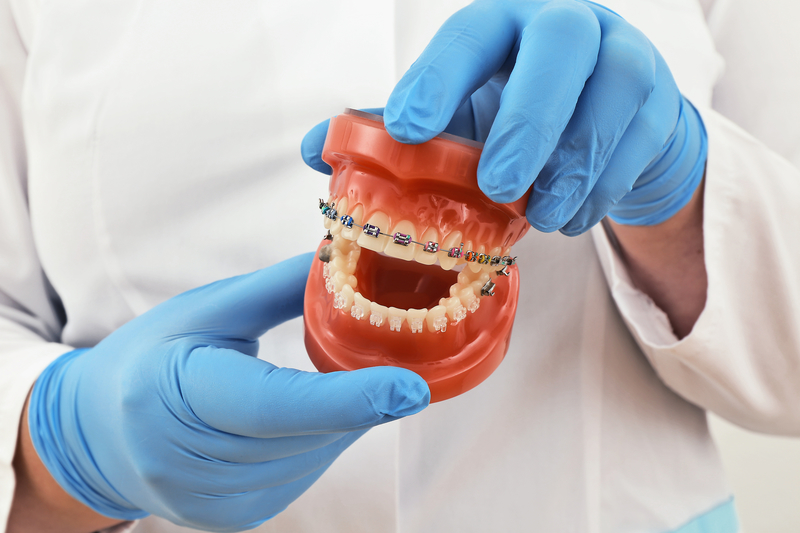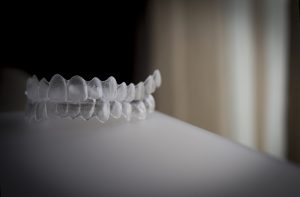Can You Have Braces with Gum Disease?
Sugar Guidelines for Children’s Teeth Health
March 15, 2018Preparing Children for Child Orthodontics
March 31, 2018
Millions of people—64.7 million in the U.S. alone—have gum disease. Many of those people have had, want, or will need orthodontic treatment to straighten their teeth. However, gum disease is an infection of the gums and the bones of the mouth. With severe gum disease, tooth loss and loose gums are very real problems, making braces an impossibility in some cases. However, if a dentist can get gum disease under control, then a patient might be able to have braces with gum disease. It all depends on how much bone loss a patient has had with the disease and how advanced the disease is. Find out what you can do about gum disease if you have it, and if you can still have braces!
What Is Gum Disease?
When you eat, sugars in your food mix with bacteria in your mouth to form plaque. This is a sticky, acidic substance that leads to cavities, as plaque erodes tooth enamel until there are holes in the teeth. It then decays a tooth from the inside.
Plaque does this because it sticks to your teeth like glue. Simply drinking water won’t wash plaque away. You have to be brushing and flossing your teeth to get rid of plaque, which is something many people don’t do enough. Plaque not only affects your teeth, but it causes gum disease. Because plaque is acidic in nature, it irritates your gums, causing them to be red, swollen and irritated. They also tend to bleed easier if you floss your teeth. Your gums try to get away from this acidic plaque and end up receding. Your gums can recede so much with severe gum disease that your teeth actually start to fall out and your gums become mushy.

Gum Disease Is Very Common
Did you know that over 64.7 million Americans suffer from some form of gum disease? That’s only counting American adults! 8.7% of people have mild periodontitis (which is the scientific name for gum disease). 30% have moderate periodontitis and 8.5% have severe stages of the disease, where tooth loss is common. However, this disease takes time to develop, as it doesn’t just happen overnight. If you’re not watching your oral health, you can find yourself with gum disease without knowing it.
If you are seeing a dentist and/or orthodontist often, they can catch the beginning stages of periodontitis. The beginning stage is known as gingivitis, and is that stage where gums are starting to become red and swollen. Your gums should be a healthy-looking pink color, instead of dark red. They should never be swollen, and your gums shouldn’t bleed easily. If you haven’t flossed in a while, you might have mild periodontitis, which is why your gums will bleed. We can help you if you are in this early stage of gum disease and you can still receive orthodontic treatment via braces.
Are Braces an Option?
Depending on what stage of periodontitis you have, you may or may not be able to receive braces. Many people receive braces while they are young children or teenagers, and many won’t have to worry about gum disease. However, even children can have this disease if they aren’t brushing and flossing their teeth every single day. We would have to help you reduce your gum problems before you could receive braces. In the mild and even moderate stages, we can reverse damage to your gums if you immediately start brushing and flossing your teeth every day, several times a day. Brush after every meal with a soft-bristled toothbrush and use fluoride toothpaste. Help children to brush their teeth several times a day.
With flossing, make sure you are flossing every tooth, getting up into the gumline and making sure you’re scraping plaque from your teeth as you go. You may even need to scrape your gums with your nails or dental tool if plaque collects in certain areas. These habits over several weeks and months can turn your red, inflamed gums back to a healthy pink color. Then, you can receive braces if the braces you want are ceramic braces, lingual or traditional metal braces. All of these types of braces are bonded to your teeth for 18-24 months, so we want to make sure your gums are healthy before we add appliances to your teeth.

Braces with Gingivitis
If you already have gingivitis, all is not lost. Some patients can get orthodontic appliances on their teeth if they are starting to get their mild gum disease under control. However, Invisalign treatment may be a better option of you struggle with periodontitis and other gum problems. Many studies show that putting orthodontic appliances on the teeth can cause gum disease to rapidly progress, as the teeth get harder to clean with brackets and wires. Plaque collects in pockets and patients develop periodontal pockets that get bad quickly. However, some patients have their gum disease pockets go away as teeth become straighter and plaque doesn’t get caught in areas where the teeth are crooked. It all depends on the patient.
However, when in doubt, use Invisalign treatment if you have gum disease. These are removable orthodontic appliances that you can take out to eat, drink, play sports and more. They also allow you to brush and floss your teeth with ease, which is something you need if you have gum disease. You will have to work closely with Dr. Hardy to determine what braces option is right for you and the condition of your oral health. If you have questions about gum disease, braces or more, call Hardy Pediatric Dentistry & Orthodontics today at (720) 877-6003!